© 2014-


Radio Mercur - History (2)
Radio Mercur’s programmes consisted mainly of 15 or 30 minute segments, many of which were sponsored. However after the technical problems of the early weeks and uncertainty about how the authorities would act against the station many potential advertisers were reluctant to purchase airtime. This caused immense financial difficulties for Radio Mercur -
The station's frequency of 93.12mHz had been chosen as it lay conveniently between the Danish 1st and 2nd Networks, so listeners tuning their radios to either of these stations stood a good chance of unintentionally discovering Radio Mercur. However, it quickly became apparent that Radio Mercur's transmissions on this strategically chosen frequency were causing interference to a station in Sweden, so Radio Mercur changed to a new frequency -
Early audience estimates from a Gallup Survey in September 1958 showed that 22% of Copenhagen households had listened to Radio Mercur in its first month. With more than one person listening to each radio an audience for the station was estimated to be in the region of 300,000.
Early technical problems were gradually resolved during the autumn of 1958 with assistance from a radio amateur, Herluf Hansen. By November the transmitter power had been increased from the initial 1.5kW to 14kW and reception was vastly improved across a large area. Another Gallup poll in November showed that 33% of people in Copenhagen listened to the station and across a wider area 14% of the population tuned in. The same poll also showed that 42 % of Danish people were in favour of Radio Mercur being legalised, with only 5% against (52% however didn’t know !).
Although intended for a Danish audience Radio Mercur became very popular in Sweden too and on 1st September 1958 experimental Swedish language programmes were introduced under the call sign Skanes Radio Mercur. The sale of airtime to the company operating the Swedish service produced much needed revenue for Radio Mercur and enabled it to stay on the air.
A limited news service in the form of a four minute daily bulletin was introduced from 19th October 1958. News was supplied by the Socialist newspaper Aktuelt and consisted of non-
1959
By February 1959, despite its initial popularity with advertisers, Radio Mercur was discovered to be trading at a loss. The station had been severely underfunded from the outset and there was not sufficient advertising income to recover the high initial investment and day-
Financial he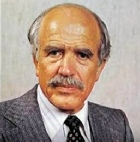 lp came in March from Danish banker, Alex Brask Thomsen, who arranged to provide a large loan for Radio Mercur in return for an allocation of share capital in the station. With this substantial injection of capital Radio Mercur was able to improve both programme content and the technical quality of its transmissions. In addition Thomsen adopted a more aggressive marketing policy for Radio Mercur and promoted its huge commercial potential to prospective advertisers.
lp came in March from Danish banker, Alex Brask Thomsen, who arranged to provide a large loan for Radio Mercur in return for an allocation of share capital in the station. With this substantial injection of capital Radio Mercur was able to improve both programme content and the technical quality of its transmissions. In addition Thomsen adopted a more aggressive marketing policy for Radio Mercur and promoted its huge commercial potential to prospective advertisers.
The result was that the station quickly succeeded in attracting more and more advertisers and programme sponsors and, as a consequence, became a viable commercial operation. Such was the commercial success of the station now the loan from Alex Brask Thomsen was repaid within six months.
By August 1959 the co-
The station went from strength to strength and during the summer of 1959 an English language programme "Copenhagen Today" was introduced into Radio Mercur's schedules, w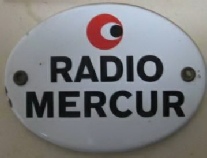 ith music and entertainment information aimed at tourists visiting Denmark. A weekly English language programme from London was also broadcast as were a number of English language commercials, notably a campaign for Roses Lime Juice.
ith music and entertainment information aimed at tourists visiting Denmark. A weekly English language programme from London was also broadcast as were a number of English language commercials, notably a campaign for Roses Lime Juice.
A public opinion survey taken to coincide with the station's first anniversary in August 1959 showed that 38% of the total population of Copenhagen regularly listened to Radio Mercur and to mark this success broadcasting hours were extended on both the Danish and Swedish services.
Meanwhile, the Danish authorities were looking for a way they could take action against the popular offshore radio station anchored off their coast. They realised that unilateral action would only result in the station moving its centre of operations elsewhere, so they decided to explore the idea of instigating concerted international action against offshore broadcasters.
The International Telecommunications Union (ITU) had called a conference in Geneva in 1959 to discuss issues affecting broadcasting in member states and the Danish Telegraph Board successfully proposed a recommendation which prohibited, on an international scale, broadcasting from ships anchored in international waters. However, despite forcing through this agreement no specific action was taken at that time against Radio Mercur. It was only after other offshore stations started to appear off the coast of Sweden and Denmark that the Nordic Council, representing all Scandinavian countries, considered taking some unified action.
1960
Throughout 1959 and 1960 Radio Mercur continued to steadily increase in popularity and maintain its challenge to the Danish radio network. By this time Radio Mercur was estimated to have 2.5million regular listeners. Similarly Skanes Radio Mercur was also thriving and continuing to challenge the Swedish state radio network. The Swedish station moved its recording studios again in 1960 to premises in Malmo, the country’s third largest city and heart of the station’s target area.
By the end of 1960, it b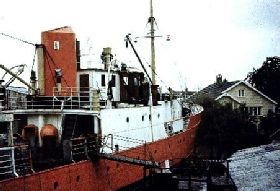 ecame apparent from operating experience that a larger ship, with on board studio facilities, was needed for the station. To keep the operation outside the restrictions imposed by Danish law a London-
ecame apparent from operating experience that a larger ship, with on board studio facilities, was needed for the station. To keep the operation outside the restrictions imposed by Danish law a London-
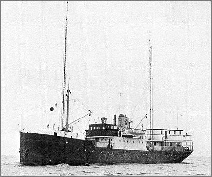
1961
Once completed the radio ship was then hired to Radio Mercur by the London-
The transmitter from the original Cheeta was later installed on Cheeta 2 and used to broadcast the Swedish language programmes of Skanes Radio Mercur on the original frequency of 89.55mHz, making Radio Mercur the first offshore station to transmit separate programmes from the same ship simultaneously.
On 7th April 1961 more offshore broadcasting history was made when Radio Mercur started experimental stereo transmissions. To achieve this the station used both transmitters on board the Cheeta 2, (88.0 Mhz for the left channel and 89.5 Mhz for the right channel) and listeners needed two rad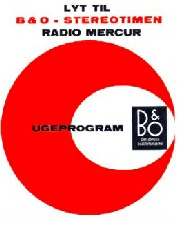 ios to receive these primitive stereo broadcasts. The stereo broadcasts were made possible through collaboration with radio manufacturers Bang and Olufsen who manufactured the equipment for Radio Mercur as part of their desire to develop and produce stereo radio receivers.
ios to receive these primitive stereo broadcasts. The stereo broadcasts were made possible through collaboration with radio manufacturers Bang and Olufsen who manufactured the equipment for Radio Mercur as part of their desire to develop and produce stereo radio receivers.
Having been replaced by the new, larger ship the original Cheeta was taken to a Norwegian port in July 1961, leased to a Norwegian shipping company and used as a working vessel to transport cargoes of scrap iron between various Scandinavian ports.

Cheeta 2 being fitted out as a radio ship in Kristiansand, Norway

Click on picture to enlarge
Cheeta 2
Photo: Ingemar Lindqvist
Film containing some early footage of Radio Mercur
Alex Brask Thomsen

History
Key Dates
Ship and Location
Technical
Staff
Programmes





For more about
Radio Mercur visit
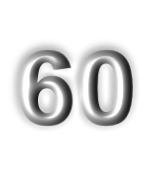
YEARS

In the Special Exhibitions Gallery on the Ground Floor

Treasure Chest


Back to Radio Mercur

Back to Scandinavia Gallery

